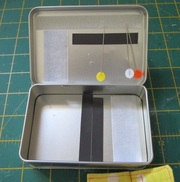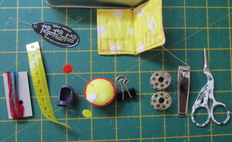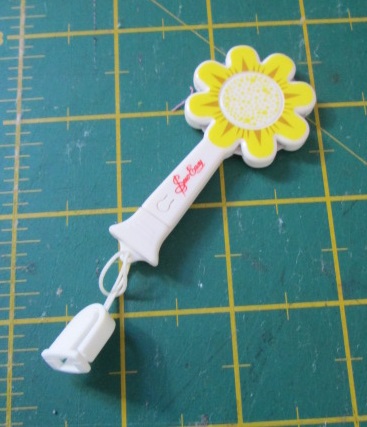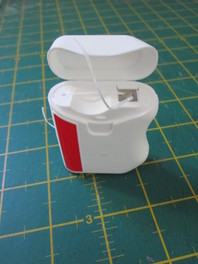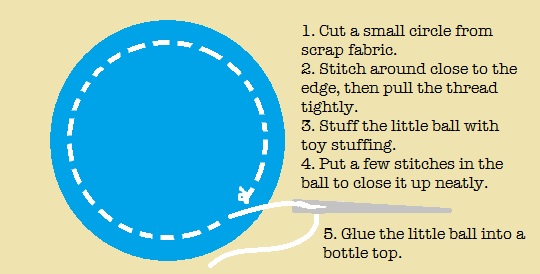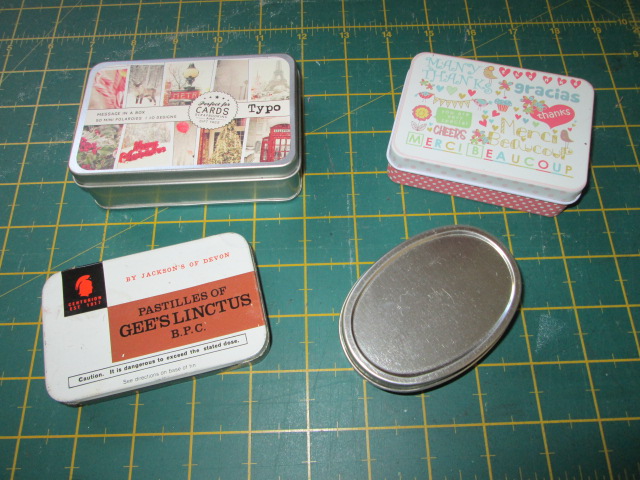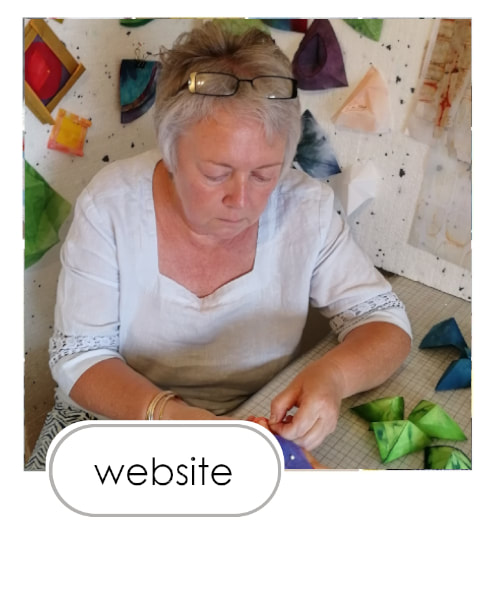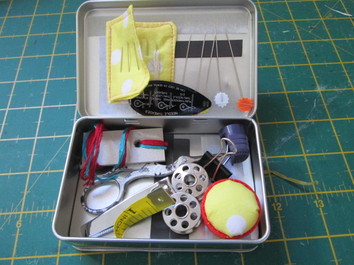 A great gift for a quilter? Yes, I know. It is silly. But silly things make me laugh. This is my 'quilt-tin'. It is so useful that I keep one in my handbag, so wherever I am, when I have time on my hands, I have something nice to keep me occupied. As it is small and self contained it is also perfect for travel - so if you are on a train, plane in the car or on the bus, you can pull it out and get going on a little project! I made it from bits and bobs I already have - or scraps I found in my recycling bin.
I am planning some big travel over the next few weeks and months - so my quilt-tins will be coming in very handy. I will blog some pictures of them on my travels soon! I can recommend making up a portable little sewing kit if you don't already have one - keep it small and neat and I am sure you will be surprised at how often you can use it. They also make great gifts for quilting friends! Thanks for reading.
|
|

